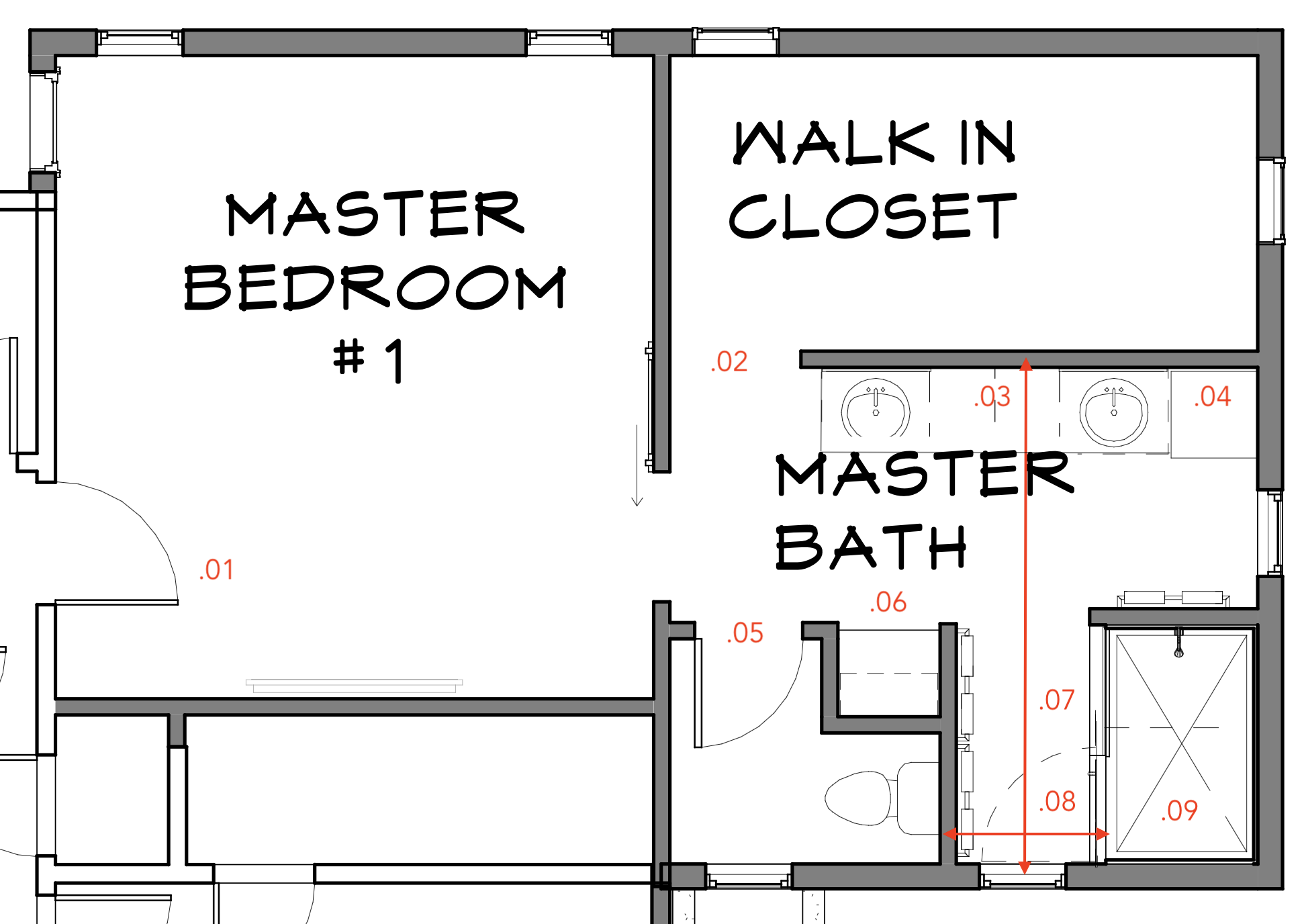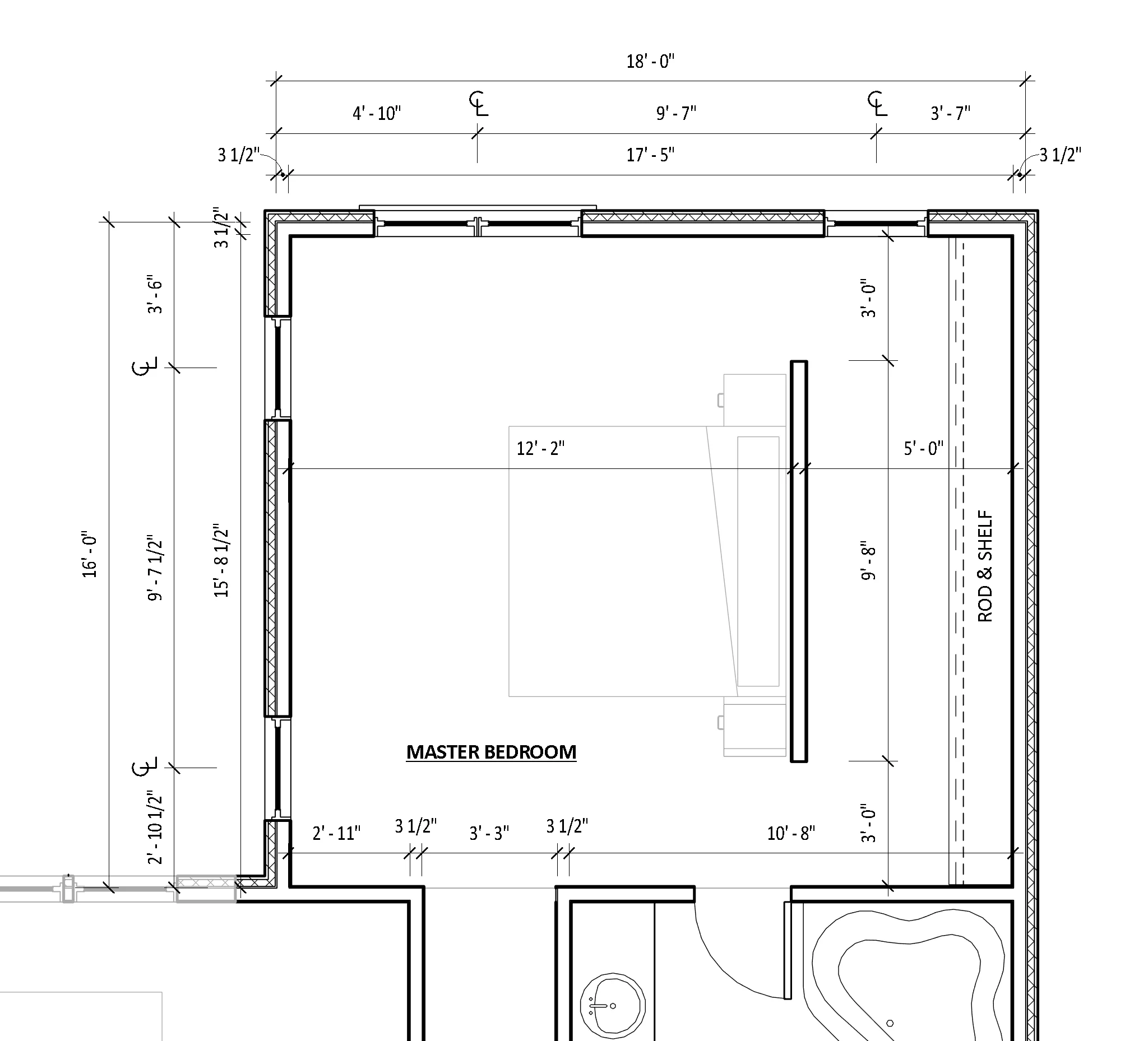The Benefits of Adding On to Your Master Bedroom
Envisioning a spacious, luxurious haven within your own home? Adding on to your master bedroom can transform your living space into a sanctuary of comfort and elegance, offering a multitude of benefits that enhance your daily life and elevate your property’s value.
Increased Living Space and Functionality
Expanding your master bedroom provides a significant increase in living space, allowing for more freedom and flexibility in how you utilize the room. This additional space can be used to create distinct areas within the bedroom, such as a dedicated reading nook, a home office, or a separate seating area for relaxation. By strategically designing the addition, you can optimize the functionality of your master bedroom, catering to your specific needs and preferences.
Creating a Luxurious Retreat
Adding on to your master bedroom presents an unparalleled opportunity to create a luxurious retreat within your home. Imagine indulging in a spa-like bathroom with a soaking tub, a walk-in shower, and elegant fixtures. A spacious walk-in closet offers ample storage for your wardrobe, while a private balcony or patio provides a serene outdoor oasis. These additions transform your master bedroom into a sanctuary of relaxation and rejuvenation.
Increased Property Value and Appeal
A master bedroom addition can significantly increase the value and appeal of your property. Potential buyers often prioritize spacious and luxurious master bedrooms, recognizing their impact on overall living comfort and enjoyment. A well-designed addition demonstrates a commitment to quality and refinement, making your home more attractive to a wider range of buyers. Moreover, a master suite with enhanced features can command a higher price point in the real estate market, offering a substantial return on your investment.
Planning Your Master Bedroom Addition: Add On Master Bedroom Plans

Adding a master bedroom addition to your home is a significant undertaking that requires careful planning. This section will guide you through the essential steps to ensure a successful and enjoyable project.
Budgeting for Your Master Bedroom Addition, Add on master bedroom plans
Establishing a realistic budget is crucial before starting any construction project. Consider factors such as the size of the addition, materials used, labor costs, and any permits required. Research local building codes and regulations to understand potential costs associated with compliance.
- Initial Consultation with a Contractor: Seek a qualified contractor for an initial consultation to obtain a preliminary cost estimate. This will provide a baseline for your budget and help identify potential cost-saving opportunities.
- Material Costs: Factor in the cost of building materials, such as lumber, roofing, siding, windows, and doors. Consider different material options to find the best balance between quality and cost.
- Labor Costs: Labor costs can vary significantly depending on the complexity of the project and the local labor market. Research average labor rates in your area to get an accurate estimate.
- Permits and Inspections: Obtain necessary permits from local authorities and factor in the cost of inspections throughout the construction process.
- Contingency Fund: Allocate a contingency fund of 10-20% of your estimated budget to cover unforeseen costs or changes in scope.
Architectural Style and Design
The architectural style and design of your master bedroom addition should complement the existing style of your home. Consider the following aspects:
- Existing Architectural Style: Maintain consistency with the existing style of your home. For example, if your home is a traditional colonial, consider a similar style for the addition.
- Desired Features: Determine the features you desire in your new master bedroom, such as a walk-in closet, ensuite bathroom, or a private balcony.
- Natural Light: Maximize natural light by strategically placing windows and skylights. Consider the direction of sunlight and the size of windows to create a bright and airy space.
- Floor Plan: Design a functional floor plan that optimizes space utilization and provides ample storage.
- Exterior Design: Choose materials and finishes that complement the existing exterior of your home.
Maximizing Space Utilization
Maximizing space utilization is crucial in a master bedroom addition, especially if you have limited square footage. Consider these strategies:
- Built-in Storage: Incorporate built-in shelves, drawers, and closets to maximize storage space and minimize clutter.
- Multifunctional Furniture: Utilize multifunctional furniture, such as a bed with built-in storage or a sofa bed, to maximize space efficiency.
- Vertical Space: Utilize vertical space by installing high shelves or hanging storage solutions to maximize storage capacity.
- Open Floor Plan: Consider an open floor plan to create a sense of spaciousness, especially if the addition is small.
Considering Existing Structural Elements
Before starting construction, assess existing structural elements, such as the foundation, walls, and roof, to ensure they can support the addition.
- Foundation: Determine if the existing foundation can handle the added weight of the addition. If not, you may need to reinforce or extend the foundation.
- Walls: Check the structural integrity of existing walls and ensure they can support the addition. You may need to add support beams or columns.
- Roof: Ensure the existing roof can support the added weight of the addition. You may need to reinforce or extend the roof structure.
Potential Challenges
Be prepared for potential challenges during the planning phase, such as:
- Building Codes and Regulations: Comply with local building codes and regulations, which may impact design choices and construction methods.
- Site Access: Ensure adequate site access for construction equipment and materials.
- Environmental Considerations: Consider environmental factors, such as soil conditions, drainage, and vegetation.
- Neighboring Properties: Maintain good communication with neighbors and respect their property boundaries.
Master Bedroom Addition Design Ideas

Adding on to your master bedroom presents an exciting opportunity to create a luxurious and personalized sanctuary. The design possibilities are endless, allowing you to transform your space into a haven of comfort and style.
Architectural Styles
The architectural style of your master bedroom addition should complement the existing style of your home. This ensures a cohesive and visually appealing design. Here are some popular architectural styles for master bedroom additions:
- Traditional: This style is characterized by symmetrical layouts, detailed moldings, and classic elements like fireplaces and bay windows. It exudes a timeless elegance and sophistication.
- Contemporary: This style embraces clean lines, open spaces, and modern materials like glass and metal. It offers a minimalist and sleek aesthetic that feels fresh and inviting.
- Mediterranean: This style features arched doorways, terracotta tile floors, and warm color palettes. It evokes a sense of relaxed luxury and creates a tranquil ambiance.
- Rustic: This style incorporates natural materials like wood and stone, creating a cozy and inviting atmosphere. It often features exposed beams, vaulted ceilings, and large windows to connect with the outdoors.
Layout Options
The layout of your master bedroom addition is crucial for creating a functional and comfortable space. Consider the following layout options:
- En Suite Bathroom: Adding an en suite bathroom is a popular choice for master bedroom additions. This creates a private oasis within your bedroom, providing a luxurious and convenient experience.
- Walk-In Closet: A spacious walk-in closet is a must-have for any master bedroom addition. It provides ample storage space for your clothes, shoes, and accessories, keeping your bedroom tidy and organized.
- Sitting Area: A dedicated sitting area can transform your master bedroom into a multi-functional space. This area can be used for reading, relaxing, or simply enjoying a cup of coffee in the morning.
- Home Office: If you work from home, consider adding a dedicated home office space to your master bedroom addition. This provides a quiet and private workspace that promotes productivity.
Decor Themes
The decor theme of your master bedroom addition should reflect your personal style and create a space that you love spending time in. Here are some popular decor themes:
- Minimalist: This theme emphasizes clean lines, neutral colors, and minimal clutter. It creates a serene and calming atmosphere.
- Bohemian: This theme is characterized by eclectic elements, rich textures, and vibrant colors. It embraces a free-spirited and artistic aesthetic.
- Modern Farmhouse: This theme blends rustic elements with modern touches, creating a warm and inviting space. It often features natural materials, distressed finishes, and a neutral color palette.
- Glam: This theme embraces luxurious finishes, bold colors, and dramatic lighting. It creates a glamorous and sophisticated atmosphere.
Unique Features
Adding unique features to your master bedroom addition can elevate its design and create a truly special space. Consider incorporating the following features:
- Fireplace: A fireplace adds warmth, ambiance, and a focal point to your master bedroom. It creates a cozy and inviting atmosphere, perfect for relaxing on chilly evenings.
- Built-In Bookshelves: Built-in bookshelves provide ample storage for your books, creating a visually appealing and functional feature. They can also be used to display decorative items or family photos.
- Custom Cabinetry: Custom cabinetry provides a tailored look and maximizes storage space. It can be designed to fit your specific needs and preferences, creating a truly personalized space.
Cohesive Design
To ensure a cohesive and elegant design, consider the following tips:
- Use a Consistent Color Palette: Choose a color palette that complements the existing style of your home and flows seamlessly between the addition and the rest of the house.
- Incorporate Similar Materials: Use similar materials throughout the addition, such as wood flooring, stone countertops, or metal accents, to create a sense of continuity.
- Maintain a Consistent Architectural Style: Ensure that the architectural style of the addition complements the existing style of your home, creating a harmonious and cohesive design.

